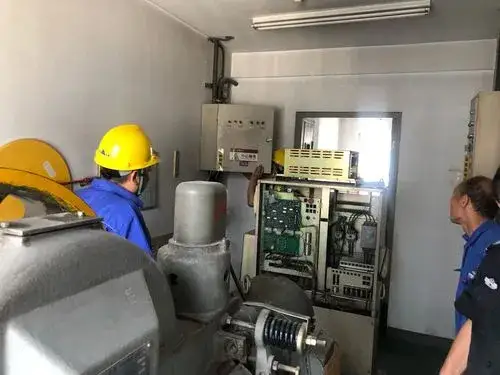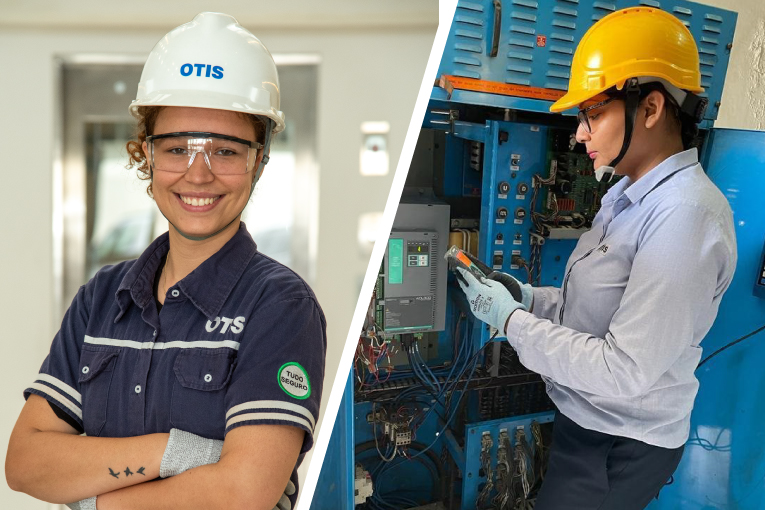Why You Need a Competent Lift Engineer for Optimal System Efficiency
Why You Need a Competent Lift Engineer for Optimal System Efficiency
Blog Article
Exploring the Important Aspects of Lift Upkeep Practices
From normal assessments to executing precautionary maintenance actions, every element of upkeep contributes to the general performance and long life of elevator systems. By exploring these nuances, a deeper understanding of lift maintenance techniques can be gotten, shedding light on the complexities that make a significant distinction in elevator efficiency and security.
Value of Normal Evaluations
Normal assessments are a critical aspect of lift maintenance, making certain the security and efficiency of the system. These regular checks are essential in determining potential problems before they intensify into significant problems, hence avoiding pricey repair services and downtimes. During examinations, trained professionals carefully analyze various components such as cable televisions, wheels, motors, and security features to ensure they are working appropriately. By sticking to a regular evaluation timetable, structure owners and facility managers can assure that their elevators meet all security laws and standards. Proactive upkeep via normal inspections can extend the lifespan of the elevator equipment, ultimately conserving on substitute prices in the long run. Furthermore, these inspections play a vital role in boosting the overall passenger experience by lessening the incident of unforeseen break downs or interruptions in solution. Finally, normal examinations are not simply an upkeep job yet an aggressive procedure to copyright lift durability, dependability, and safety and security.

Preventive Upkeep Steps
Structure on the foundation of normal examinations for lift maintenance, precautionary upkeep steps offer as proactive methods to even more boost the reliability and durability of elevator systems. These measures include set up jobs aimed at protecting against possible concerns before they escalate into pricey problems or create downtime. Trick components of precautionary upkeep for lifts include oiling relocating parts, changing door devices, screening security attributes, and inspecting electrical systems. By adhering to a structured precautionary upkeep routine, structure owners and center supervisors can decrease the risk of unforeseen malfunctions, lower repair work expenses, and make sure guest safety and security.
Consistently changing damaged elements, such as cords, pulley-blocks, and control systems, is additionally vital in precautionary maintenance to mitigate the threat of breakdowns. lift maintenance. Furthermore, carrying out extensive performance evaluations and maintaining in-depth upkeep records can aid identify patterns of wear and possible areas for improvement. Carrying out these precautionary maintenance measures not just boosts the total effectiveness of lift systems however also adds to a safer and extra reliable upright transportation experience for constructing residents
Duty of Trained Specialists

Moreover, trained technicians are equipped to manage emergency situation circumstances without delay and efficiently - lift engineer. In the occasion of a breakdown or entrapment, their proficiency enables them to repair troubles properly, minimizing downtime and bring back lift capability promptly. Furthermore, navigate to this website these experts remain updated on sector criteria and technological developments, allowing them to execute the most recent upkeep methods and guarantee conformity with security policies
Enhancing Efficiency With Maintenance
Trained specialists' experience in lift upkeep not only ensures safety and security and optimum efficiency yet likewise serves as a keystone for boosting overall system efficiency via thorough maintenance practices. With regular inspections, lubrication of relocating parts, and changes to make certain alignment, technicians can adjust the lift system for peak performance.
In addition, proactive upkeep actions can prolong the lifespan of lift components, reducing the need for early substitutes. This positive technique not just improves performance yet also contributes to a smoother, quieter adventure for travelers. Additionally, by remaining abreast of technical developments and market ideal techniques, technicians can execute upgrades or modifications that enhance system effectiveness and user experience. Generally, prioritizing maintenance not only increases lift efficiency however likewise enhances safety and security, integrity, and overall fulfillment for developing passengers.

Durability of Lift Systems
Sustaining the durability of elevator systems needs a tactical mix of proactive upkeep practices and adherence to sector standards. Lifts are complicated systems that undergo considerable deterioration as a result of continuous usage. To guarantee their long life, normal evaluations, lubrication of moving components, and timely replacements of worn-out elements are crucial. Implementing a preventative upkeep schedule can help identify prospective problems prior to they rise, therefore expanding the life expectancy of the lift system.
Additionally, compliance with sector regulations and requirements is critical for the safe and efficient operation of elevators. Complying with guidelines set by companies such as the American Society of Mechanical Engineers (ASME) guarantees that upkeep tasks are done appropriately which safety protocols are upheld. Failure to comply with these standards not only endangers the durability of the elevator system but also positions substantial risks to the residents.
Final Thought
Finally, the important elements of elevator maintenance practices include normal inspections, preventive upkeep procedures, the function of skilled professionals, improving performance through upkeep, and making sure the durability of elevator systems. By sticking to these methods, building proprietors can ensure the safety and security, integrity, and performance of their elevator systems, ultimately lowering the danger of costly repairs and downtime. Keeping lifts in optimal problem is find vital for the well-being of owners and the smooth operation of structures.
By discovering these subtleties, a deeper understanding of lift upkeep practices can be acquired, shedding light on the details that make a considerable distinction in elevator efficiency and security.
Normal examinations are a vital aspect of lift upkeep, making sure the safety and effectiveness of the system.Building on the structure of regular evaluations for elevator upkeep, preventive maintenance measures serve as more aggressive approaches to additionally improve the reliability and durability of lift systems.Trained service technicians' expertise in lift upkeep not only makes sure safety and security and optimal efficiency but additionally serves as a foundation for boosting total system performance with careful maintenance techniques.In conclusion, the vital facets of lift upkeep practices consist of regular evaluations, precautionary upkeep actions, the role of trained technicians, improving efficiency with upkeep, and making certain the longevity of lift systems.
Report this page